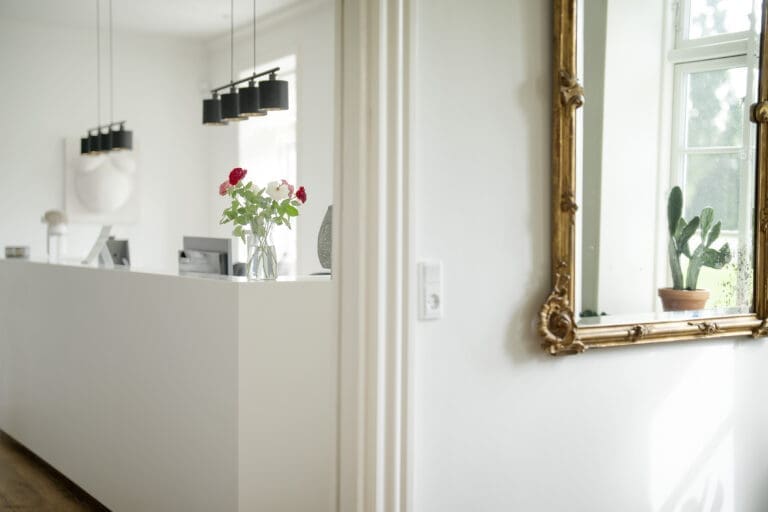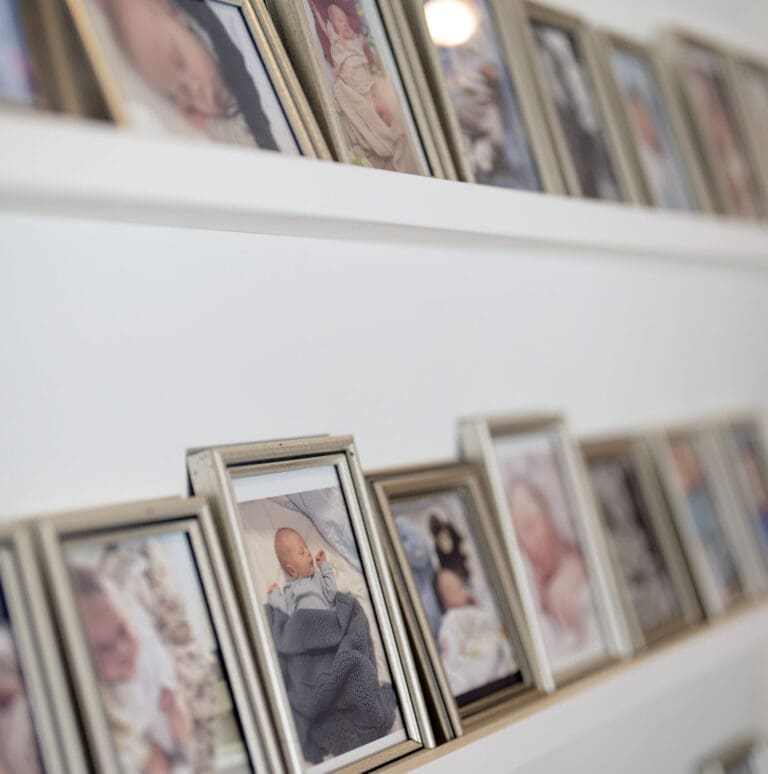
Insemination treatment can increase the chance of pregnancy in couples where the man has a slightly reduced sperm count or where the woman is receiving medical help to produce mature egg follicles. If you are a single woman or in a lesbian relationship, insemination treatment will often be your first choice of treatment.
In order to achieve pregnancy through insemination, it is a condition that the fallopian tubes are functioning, i.e. that there is passage through them so that the sperm can swim up to the egg. Fertilisation then takes place in the outer part of the fallopian tube.
Insemination treatment can be done without hormone therapy in your own cycle or with light hormone therapy.
For severely reduced sperm quality, pregnancy can only be achieved through IVF treatment or insemination with donor sperm.
Find out more about insemination and what treatment you can be offered at IVF-SYD by booking a non-binding initial consultation.

The insemination itself
During insemination, the purified semen is inserted into the uterus via a thin catheter approximately 24-36 hours after the woman has taken medicine to induce ovulation. The insemination takes place when the chance of fertilisation is greatest.
The insemination is painless. It is an advantage to attend the insemination with a half-full bladder, as this facilitates the insertion of the catheter.
Afterwards, you can live a normal life and do not need to rest or take sick leave. You can also have sexual intercourse on the same day and the following days.
Results
The chance of achieving pregnancy with insemination treatment is approximately 15-20% per treatment.
If pregnancy has not been achieved after 3-6 treatments, it is recommended to proceed with IVF treatment, where the chance of pregnancy is much higher.
The aspects of the treatment
Read more about the different aspects of the insemination treatment below.
2 possibilities for treatment
You can receive insemination treatment in two ways:
Treatment in your own cycle: If you have a regular cycle of between 26 and 35 days and have no immediate obstacles to pregnancy, you can be treated in your own cycle without medication/hormones.
Stimulated cycle treatment: In some cases, we will treat with mild hormone stimulation. The aim is to create between 1 and max. 3 follicles/ovules.
The man’s semen sample
The semen sample is usually made at home, unless you have a long drive to the clinic.
On the day we schedule the insemination, you will be given a cup.
The semen sample must be no more than 2 hours old when we receive it and remember that it must maintain body temperature during transport. We recommend that there has been no ejaculation 2-3 days before making the semen sample.
Donor sperm
At the clinic we have a selection of anonymous donor sperm from a Danish sperm bank and if you want to make use of this, you can choose a donor based on the basic profile, i.e. eye colour, hair colour, height, weight and skin colour.
If you wish to choose an anonymous sperm donor other than what we have at the clinic or a non-anonymous donor, you must order donor sperm yourself from one of the available sperm banks.
Pregnancy test
You should take a pregnancy test in the morning approximately 14 days after insemination. You will be given a pregnancy test at the clinic and you are asked to write us an email with the result.
If the pregnancy test is positive, you will be given an appointment for a free pregnancy scan approximately 3-4 weeks later. The pregnancy test should always be taken even if there is bleeding, as menstrual-like bleeding can occur even during pregnancy.
If the pregnancy test is negative, you can start a new treatment immediately. You can sign up for new treatment when you get your period.
Risks – overstimulation of the ovaries
In insemination, the aim is to create one healthy baby at a time. Pregnancies with twins and triplets are considered risky.
The hormone stimulation can sometimes cause a relative overstimulation of the ovaries. When this happens the ovaries produce more than the desirable 2-3 eggs. According to the Danish Health Authority’s guidelines, we are not allowed to inseminate if there are more than three mature eggs. In these cases, we must find an acceptable solution together.
Options:
- We cancel all treatment in the current cycle: The woman stop all hormone treatment and ovulation injections, and sexual intercourse is prohibited.
Price: You are charched for the ultrasound scans. See current price list. - Follicle reduction: The excess follicles are reduced to the desirable 2-3. This is done just before the actual insemination. With a thin needle, the excess follicles are emptied. The insemination is then performed in the usual way.
Price: See current price list - Conversion to In Vitro Fertilisation/IVF treatment: Here we take advantage of the fact that more than 2-3 follicles have matured. Often 5-6 follicles have matured, which is a good number of eggs for an IVF treatment. Hormone injections may be given for a few more days. At the same time, you get an injection to prevent spontaneous ovulation before egg retrieval. 35 hours after the ovulation injection, all large egg sacs are emptied, the purified sperm is added and the eggs are then cultured in the laboratory. An additional 2-5 days later, a fertilised egg is placed back into the uterus.
Price: Equivalent to 1/2 x IVF treatment

 Phone. +45 76 24 50 20
Phone. +45 76 24 50 20  info@ivf-syd.dk
info@ivf-syd.dk 